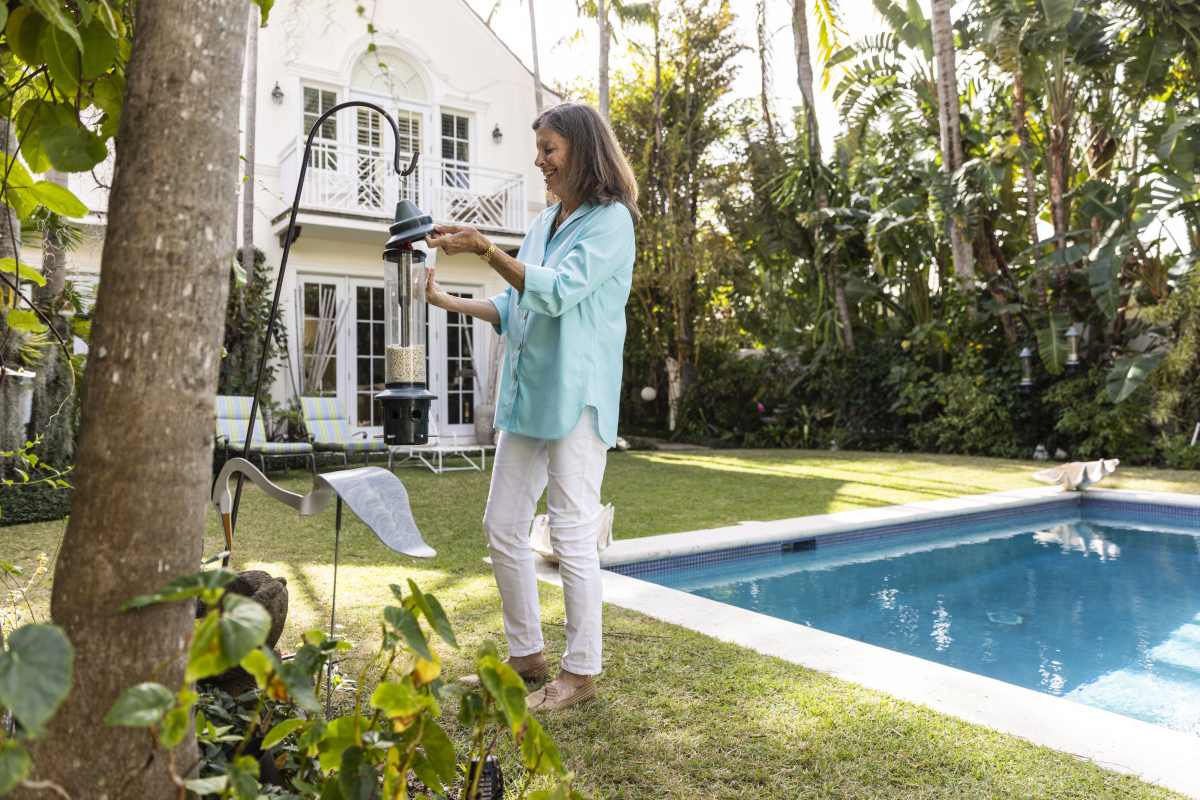Wildlife Expert Shares 4 Sure Shot Ways to Get ‘Maximum Visits’ From Bird Guests to Your Feeder

If you want a garden full of birds, the right approach is to either plant native plants or hang bird feeders with a robust strategy. While people with gardens can easily opt for the first option, urban spaces do best with bird feeders. A wildlife expert has chimed in with tips that ensure maximum visits by birds to your feeder. Tru Hubbard, an urban wildlife education coordinator for the Nevada Department of Wildlife, shared his expertise for all the bird enthusiasts hoping for a chirpy balcony. Essentially, attracting birds depends on a combination of factors, from the right spot to the type of feeder, quality of seeds, and hygiene maintenance, per CNET.

The right placement
Location is supremely important for your mission to attract maximum bird visits. The expert advised that bird feeders should be positioned at least 10 feet away from trees or shrubs for trees to prevent pests like squirrels from stealing the bird feed. Whereas in urban areas, feeders should be hung at least 30 feet away from windows or glass to avoid collisions, which is also a major source of bird deaths in the U.S.
“Prioritizing the bird's safety should be number one; thus, avoiding spots that could increase the chance of bird strikes on windows should be at the top of the list," said Hubbard. He suggested the ‘Rule of 3 or 30’ that requests people to position feeders within 3 feet of a window or at least 30 feet away. The US Fish and Wildlife Service estimated that more than 1 billion birds collide with glass windows in the U.S. Besides that, hanging feeders in shaded regions is advisable to prevent food spoilage. Experts at ColesWildBirdProducts revealed their insights on the right location for bird feeders.
Best types of feeders
There is a range of bird feeders available in the market, but the right pick largely depends on the kind of bird species you are willing to feed. “For instance, platform feeders tend to be better suited for larger songbirds like cardinals, while feeders with lots of little perches are better for small songbirds and can reduce competition for food,” the expert suggested. Durability, convenience of use, and squirrel-proof features. For bird enthusiasts interested in a variety of feathered visitors, it is recommended to use a combination of feeder styles, including hoppers, tubes, and trays. Hummingbirds are attracted to flower-shaped feeders with pores where they can drink the nectar from. Fox Run Environmental Education Center shared how to choose the best bird feeders on YouTube.
Suitable feed and seed mixes

The expert stated that feed and seed mixes are usually specific to bird species. “The type of birdseed used varies depending on what species you're hoping to attract to your backyard," Hubbard explained. To make it easier for you, black oil sunflower seeds are the topmost choice for most birds for several reasons. They are easy to crack open, nutritious in nature, and have a high oil content. 1.2 million bird feeder visits were observed to determine the popularity of this bird feed, as per a research paper published by the National Audubon Society.
These seeds attract black-capped chickadee, Cassin’s finch, northern cardinal, house finch, red-breasted nuthatch, and tufted titmouse. It is also important to ensure the quality of seeds that will likely invite a wide variety of feathered visitors. Additionally, mealworms and suet cakes are also popular feed choices among people. Stores often sell cheaper seed mixes that may contain fillers like red milo and cracked corn that do not provide sufficient nutritional value to the birds. Human food and snacks are highly dangerous and must be avoided at all costs. Sussex Wildlife Trust shared feeding tips on YouTube.
Effective cleaning
Hubbard recommended cleaning the bird feeders every other week or at least twice a month. However, this frequency can be increased in case a sick or diseased bird visits the feeder. This will reduce the risk of disease transmission to other birds and protect the health of entire bird populations in a local area. “Another option is to clean the feeder every time it is emptied," the expert added. Lesley the Bird Nerd explained why everyone should maintain hygiene in bird feeders.

Hummingbird feeders, however, generally require frequent cleanings because of the nature of the feed– nectar, which is susceptible to mold growth. Handwashing with soap or a diluted bleach solution is advisable for feeders in hot and humid settings. The ground beneath the bird feeder should also be maintained and cleaned of any fallen food and seeds, as it may lead to spoilage, thus becoming a breeding ground for diseases.
More on GreenMatters
Experts Warn Your Bird Feeder Could Be in the Wrong Spot Without You Even Realizing It
You May Think You're Helping Birds, But an Expert Says Your Timing Might Be Quite Wrong
Experts Were Asked What They Use to Clean Bird Feeders — and They All Had the Same Answer